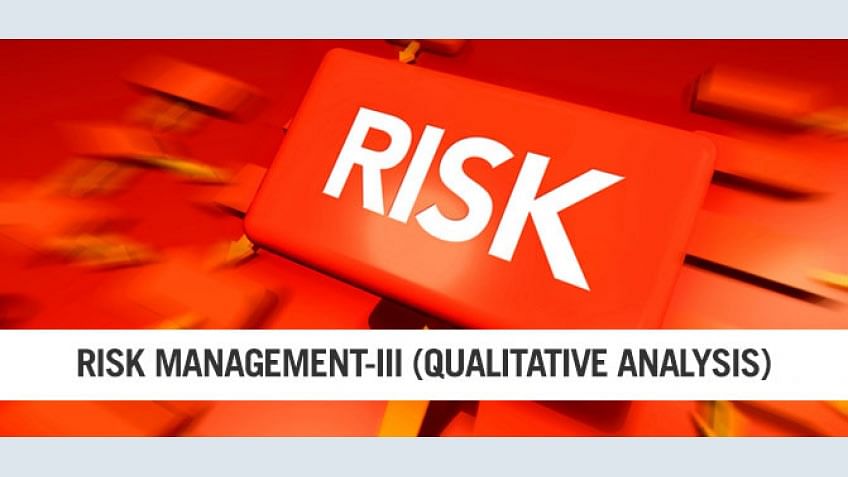This article is about Risk Management and helps in preparing for the exam.
In this part of the article we shall focus on the PMBOK® knowledge of Risk management concepts.
Qualitative Risk Analysis
Perform qualitative risk analysis is the process of prioritizing risks. This prioritization involves analyzing all identified risks, including their probability and potential impact on the project to determine which risks warrant a response. This is essentially done by assigning a probability to each risk, typically on a scale of 1 to 10, and an impact value, typically on a scale of 1 to 10 from low to high. These individual values are then plotted on a graph to indicate a Probability and Impact matrix
It’s very important that the methodology used to assign probability and impact values is standardized within the organization to ensure the results are usable for other projects and zero confusion.
The shortened list of identified risks analyzed may be further analyzed in the perform quantitative risk analysis process or may straight away move to plan risk responses process
Qualitative Risk Assessment relies on judgment and experience. New project managers should seek lessons learned from the organization’s knowledge management system or ask for inputs.
Below are some typical images of probability Impact matrix.
Important Tips for All Exam Seekers
Qualitative risk analysis is used to, by the way of comparing project risk to other projects, determine whether the project should be selected, continued or terminated. Qualitative risk analysis also helps PM determine whether to perform the Quantitative risk analysis or proceed directly to plan risk responses process
Risk Data quality assessment – Before one can use the risk information data collected so far, one must analyze the precision of data, assessing the accuracy and reliability of the data to determine whether more data is needed for developing an adequate understanding of the risk. A risk data quality assessment may include the following for each risk:
- Extent of the understanding of risk
- Data available about the risk
- Quality of the data
- Reliability and integrity of data
Risk categorization – This is the grouping of risks by its cause, to know which work packages, department or people may have the most risk associated with them. Such data is helpful simply as it provides an opportunity to eliminate multiple risks by addressing just one cause.
Risk Urgency assessment – This is the prioritization of certain risks which may warrant a response quicker than the others. In other words, which risks may need to jump the queue to move quickly through the process, may be directly to the plan risk responses process.
Output of Qualitative Risk Analysis
Risk Register updates – The process of qualitative risk analysis results in updates to risk register. These include:
- Risk ranking of the project compared with other projects
- List of prioritized risks and their probability and impact rating
- Risks categorized by groups
- List of risks for additional analysis and response
- Watch list of non-critical risks
- Trends of changes in risks over theproject phases
More on Quantitative risk analysis and plan risk responses process in the next parts of the article.
Rattan N Whig, PMP
The views presented in this article are solely my personal views. I advise all the readers to exercise discretion while adopting any views listed in this article or anywhere in the other articles for their benefits. Another important aspect is that, whenever there is a difference or conflict in information presented in these articles and those listed in PMBOK® guide or any other publication by the PMI® institute, the dispute must be resolved in favor of the information published by PMI® institute.
Want to add more charm to the application? Enroll for Simplilearn's PMP certification. It will not only refresh your project management concepts but also bear testimony to your proven skills before a recruiter. Skill up to outperform the competition!

